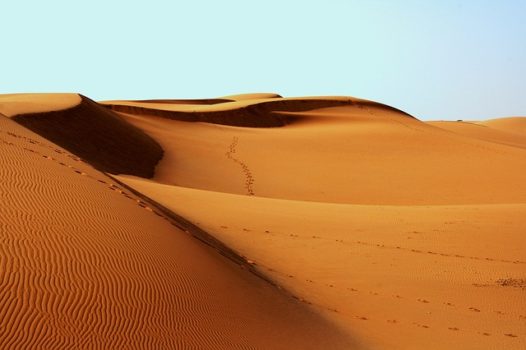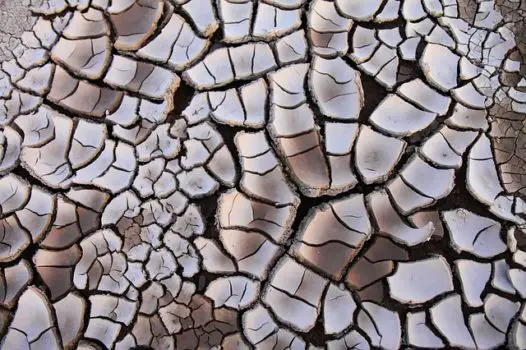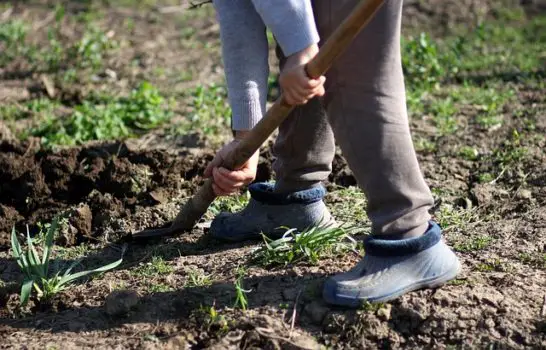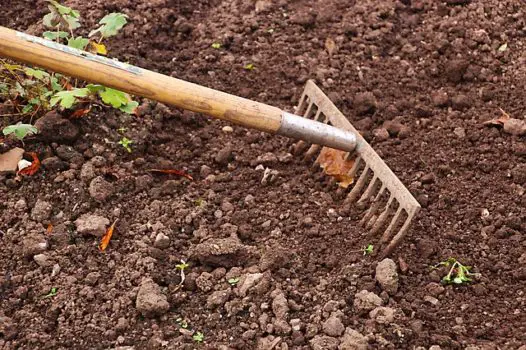When agriculturalists refer to the loam of their soil, they are referring to the basic structure or makeup of the soil. A good loam is what any grower (whether it be a garden enthusiast, or large crop farmer) desires for plants to flourish and produce. This article will discuss the three basic components of soil, (sand, clay, and silt), and how the proper ratio of these three components work together to make up the loam of your soil. It will also discuss how you can increase the quality of a soil’s loam.
The simple answer to creating better soil loam is to add organic matter. The first step to increase your soil’s loaminess is to examine what your soil is generally made up of, and determine if you have a good balance of sand, clay, and silt. Once you know what your soil’s characteristics are, you will want to add a proper amount of organic matter. This article will explore some great tried and true methods of improving your soil’s loam.
Definition of loamy soil vs fertile soil
The loam of the soil is not to be confused with the fertility of the soil. The fertility if the soil refers to the ingredients in the soil that allow for plant and tree growth. Things like nitrogen, potassium, phosphorous, etc.
The loam of the soil is the actual physical structure of the dirt itself. The physical structure can really affect the growth of your plants. The better the loam, or structure of your soil, the better your plants will grow.
So, what is soil loam?
The loam of the soil as I said before, is the structure of the soil. Soil is comprised of sand, clay, and silt. The combination of these elements is what comprises all soils. All parts have advantages and disadvantages.

Sand
Sand is comprised of larger particles.
Advantages:
- Sandy soil is easily broken down and worked.
- Sand is easily penetrated by water, and allows water to drain through to keep your plant roots from sitting in water and rotting or drowning.
- Sandy soil is great for airflow to the roots of plants.
- Sand will also allow roots to grow without much hinderance. Roots typically need the ability to stretch and roam.
Disadvantages:
- Excess sand allows nutrients to be taken away from the root zone of plants as water drains through the soil. Almost all sandy soils have nutrient deficiencies.
- Nitrogen is one of the most soluble nutrients, so sandy soil is often deficient in nitrogen.
- Sandy soil can have problems with retaining enough water for plants to grow.

Clay
Comprised of smaller particles, almost the opposite of sand.
Advantages:
- Clay soil has great water retention.
- Nutrient levels in clay soils are generally high because nutrients (and especially nitrogen) aren’t leached away via excess water drainage.
Disadvantages:
- Clay soil has smaller particles, making the the soil compact tightly, which precludes water from penetrating. This can hamper drainage and retard roots from growing freely.
- Low air supply in the soil due to the small and compacted particles.
- Clay soil can become waterlogged and create standing water which can cause plants and trees to die.

Silt
Silt is kind of the in-between soil. It’s not as small particle dense as clay, or as larger particle loose as sand.
Advantages:
- Silt retains water well.
- Silt can retain nutrients well.
- Silt does compact but can allow for root growth and some air to be available to plants.
Disadvantages:
- Silt can be the consistency of fine flour, which allows it to be easily blown away in the wind or washed away with water drainage.
- Silt can become sticky when wet.
- Silt can create hardened, almost brittle areas after it dries.
What you really want is to have a good balance of all 3 soil components for good loam. This can be done on a small scale by bringing in the proper amount of sand, clay, and silt and mixing it together. However, depending upon the size of the ground you are hoping to improve, this method can be outlandishly expensive, and there are other methods of improving loam that are less expensive, and work well.
How can you create a good loam soil? ADD ORGANIC MATTER!
Most any soil can be made good by adding organic matter! Adding organic matter will improve water drainage and retention, nutrient retention, and aeration in soil.
Sandy soil will be able to hold onto nutrients and water with the addition of organic matter.
In clay soil the smaller particles will be separated by the organic matter creating a crumblier soil. It’s less likely to harden and make a crusty surface.
Ways to add organic matter to your soil.
1-Use what your garden has already made.
There are many ways to add organic matter to your soil with resources you already have available. Perhaps the easiest method is simply to return everything you don’t consume back to your garden. Bring back the carrot tops and peelings, watermelon rinds, pea pod shells, potato peels, corn cobs and stalks. Bring everything back to your garden that was grown there, break it up however you can, and mix it directly into the ground. You will be surprised with the nutrient levels and loam production that will follow.
The one exception to this rule is diseased plants. Diseased plants need to be discarded. Some diseases will perpetuate in the soil and reinfect your plants the next season.
2-Use all the yard waste.
Grass clippings are a great source of organic matter as well. Get you own grass clippings, and maybe even a neighbor’s supply, which are typically found in abundance. You can often get a nitrogen boost with grass clippings, grass really is a high nitrogen user. Caution should be used if the grass has had a weed and feed fertilizer put on it. Some gardeners have reported that the herbicidal fertilizer stays with the grass clippings and can poison your garden.
Leaves are also outstanding to put into your garden. Tree roots go deep down into the subsoil and bring up nutrients from deep in the ground. The leaves of those trees contain those nutrients and will add them to your soil. Additionally, many leaves have a paraffin like substance in them that can slow them from breaking down. This is great to add structure to your soil. Some leaves take several years to break down. Walnut tree leaves should be avoided however. Walnut tree leaves contain a chemical (called juglone) that can prove toxic for growing plants.
Pine needles are particularly good to add to soil that is more alkaline. Pine needles have the effect of raising the acidity of the soil while adding structure. Pine needles will add good structure to your soil for years because it takes them a long time to break down.
Sawdust and woodchips are great to add as well. If you have a wood chipper, the resultant product can be fantastic to add to your soil.
3-Commercial sources for organic matter
Your local farm and ranch store, or nursery will have soil amendment available. This can be a great source for organic material. It however can be really expensive. If you have a smaller plot this may be a good way to go, but you can get plenty of organic matter from more reasonable sources.
Mulches with redwood compost and or evergreen compost will remain in the soil for years. This will add a good organic structural element to your soil allowing for aeration and water drainage.
In my area there is a green waste plant where you take yard waste, branches, bushes, etc. They will grind up the green waste and turn it into a mulch compost. It is relatively inexpensive and adds some great organic matter to the soil.
4-Local farmer, rancher, large animal owner.
A local farmer might be a great place to get organic matter to add to your soil. Often farms will have a stray bale or two that has gone bad. An old hay or straw bale is great to spread out on your garden. Some hay crop will get rained on in the processing of hay. You can sometimes get these bales for cheap or free.
Many local farmers, ranchers, or large animal owners will have piles of bedding hauled out from the stalls, stables, cages, or pens. This can be an excellent source for organic material to add to your soil. It can often have the added benefit of adding good nutrient to your soil as well. You will need to check on what kind of bedding material they use. Cedar shavings can be detrimental to some gardens.
5-Green Manure.
A great method of adding organic material to your soil is by growing your own on the ground itself. This method is known as green manure. I wrote an extensive article on it here. Basically, you grow a whole section or the entire garden with one type of plant and till it back into the soil.
Some of the crops to grow as green manure are:
- Peas
- Annual Rye Grass
- Alfalfa
- Winter Vetch
- Yellow Blossom Sweet Clover
- White Clover
- Sudan Grass
- Oats
- Barley
- Wheat
Planting legumes are a great option for a green manure crop. As a legume they are a nitrogen fixer, meaning they bring nitrogen into the soil as well as organic matter.

Best methods of incorporating organic material into your soil
The best methods of incorporating organic matter into the soil is by spading it in, tilling it in, or plowing it under.
If you don’t have a large area, or you are wanting to have a little exercise you can spade the organic matter in. Just dig and turn the soil over on top of the organic matter you are trying to mix in.
Using a roto tiller is an effective way to incorporate organic matter. A roto tiller will also aid in chopping up the organic matter to smaller particles. This method can add good aeration to the soil as well.
If you have a larger area you can plow the organic matter in with a tractor. This is the primary method we use. We have found that plowing in the fall gives the soil time to decompose the organic matter through the winter.
Summary
The loam of your soil can really help your garden grow properly and successfully. All soil is comprised of sand, clay, and silt. The combination of these soils is what creates loam. The best way to aid your soil whether is it higher in sand or clay or silt is to add organic matter. The addition of organic matter will give your soil the loam you need. Organic matter is the magic stuff that will create good soil for gardens.


5